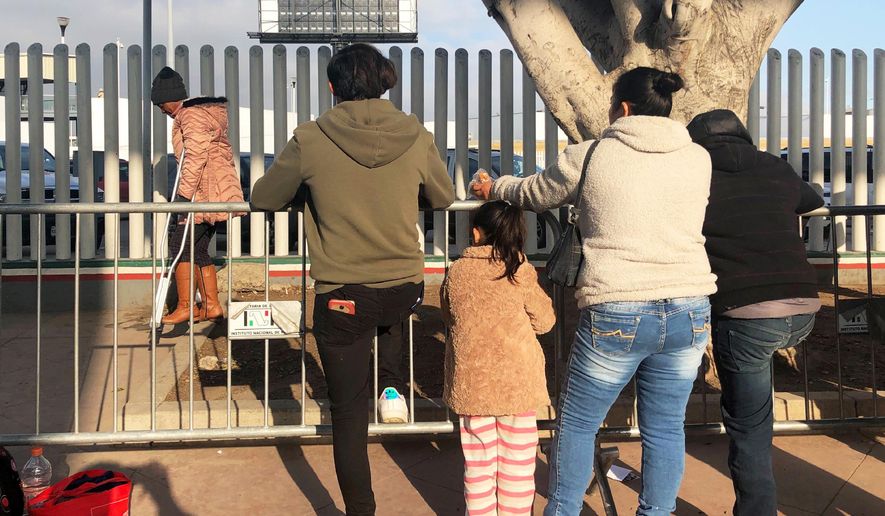The Department of Homeland Security fielded a record number of “credible fear” claims from asylum seekers at the border last fiscal year, fueling the migrant surge, but figured out ways to push back and tripled the denial rate by the end of the year.
Approvals are still high, with more than 65% of people who claim a fear of persecution in their home countries getting an initial OK in September, according to statistics seen by The Washington Times. But that’s much less than a year earlier, when more than 90% of claims cleared the credible fear bar.
U.S. Citizenship and Immigration Services said it deployed more personnel to hear cases, roped Border Patrol agents into doing some screenings, and rewrote the rules to raise the standard for who is allowed to lodge a claim, all of which helped cut down on abuse of the asylum system.
The biggest change was deeming migrants who came from a third country but crossed Mexico en route to the U.S. generally ineligible to make a credible fear claim. They were put into a different processing queue with a higher burden of proof.
The thinking behind the changes is that migrants from Honduras, El Salvador or Guatemala who fled their countries for valid reasons and headed north should claim asylum in Mexico, which is considered a safe country.
USCIS public affairs chief Jessica Collins said her agency stepped in with the rules change because Congress couldn’t get anything done.
“Absent the congressional action needed to close the loopholes fueling and prolonging the crisis, USCIS has worked with the Department of Homeland Security and other federal partners to bring badly needed reforms to deter individuals from abusing our asylum laws to gain entry to the United States,” she said.
Also helping matters was a slimmer flow of people, thanks to changes other immigration agencies made. In particular, the Migrant Protection Protocol, better known as “Remain in Mexico,” allowed Homeland Security to push tens of thousands of migrants across the border and make them wait in Mexico until their court hearings in the U.S.
Trump administration officials said they were trying to alter the incentive structure that sparked a record number of migrants from Central America to head for the U.S. over the last year.
The migrants came knowing they could begin the asylum process with a credible fear claim, gaining an immediate foothold in the U.S. — even though in most cases they knew their claims would be rejected years down the line.
They often don’t bother to pursue asylum, since the foothold in the U.S. was what they were really seeking.
Immigrant-rights groups say the changes could be denying some valid asylum seekers a chance to win life-saving protection in the U.S.
They dubbed the policy the “Asylum Ban 2.0” and sued to block it. A lower court agreed, but the Supreme Court said the policy could remain in place while the case is being heard.
More than 105,000 people made credible fear claims in fiscal 2019, which USCIS said was a new record. The agency recorded 99,035 petitions in fiscal 2018.
Historically, about one in five asylum claims is found justified, but the cases take time, and a backlog has developed. USCIS began the year with about 323,000 asylum cases pending. It ended the year with about 340,000.
A senior Homeland Security official said there’s still room for Congress to step in and tighten rules further to help cut the workload.
“We’ve gained new ground in the fight to restore order and permanently end a humanitarian and security crisis that’s endured far too long. But without durable, long-lasting legislative solutions by Congress, the vicious cycle of crisis will continue to manifest at our Southwest border with certainty,” the official said.
• Stephen Dinan can be reached at sdinan@washingtontimes.com.




Please read our comment policy before commenting.